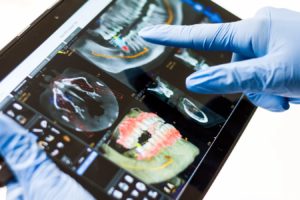Oral Surgery
What Is Cone Beam Computed Tech (CBCT)?


What is Cone-beam Computed Tech?
Cone-beam computed tomography is one of the best imaging tools used for examining facial injuries. By getting a 3D detailed image of the injury, an oral surgeon can work out the best way to repair the damage and restore the face in an optimal way, reducing any long term disability. It is a significantly more superior investigation to use than a standard dental x-ray.
Why Cone Beam Computer Tomography Is a Must in Facial Injuries
If you have a facial injury, it is easy to assume everything is fine, when in fact there may be unseen bone and tissue damage requiring surgery. If you need an oral surgeon in Stillwater OK, COOMSA is a good place to start as our team has access to CBCT. Treatment planning is essential, especially with more complex procedures in endodontic or oral surgery. A CBCT scan gives around 600 detailed images from all dimensions which enable the surgeon to see the extent of damage and how it can be repaired. For the surgeon, all the information is in one place and they have a significant amount of detail to plan the treatment. For patients, there is less risk of something being missed and the CBCT scan will have most of the detail needed, reducing a need for lots of other tests. CBCT is not used in standard oral surgery.
What Happens During a Test
When someone has a cone beam computerized tomography scan, the machine focuses on a specific area of the mouth. The dosage of radiation is significantly less than a standard scan and a chest x-ray. The patient is given a protective tunic to protect from radiation and they either sit or stand in position in the scanner. You simply need to stand still while the machine rotates around the head taking the 3D scan.
If you are looking for an oral surgeon to repair a facial injury or complex orthodontic problems, check whether they have access to CBCT; it could make a difference. If you have questions about this technology or other issue relating to oral surgery, give us a call or schedule a consultation.
Content found on this blog is intended for educational purposes only and should not be used as a substitute for professional judgement, advice, diagnosis, or treatment. Please speak with a professional if you have concerns about your oral health.